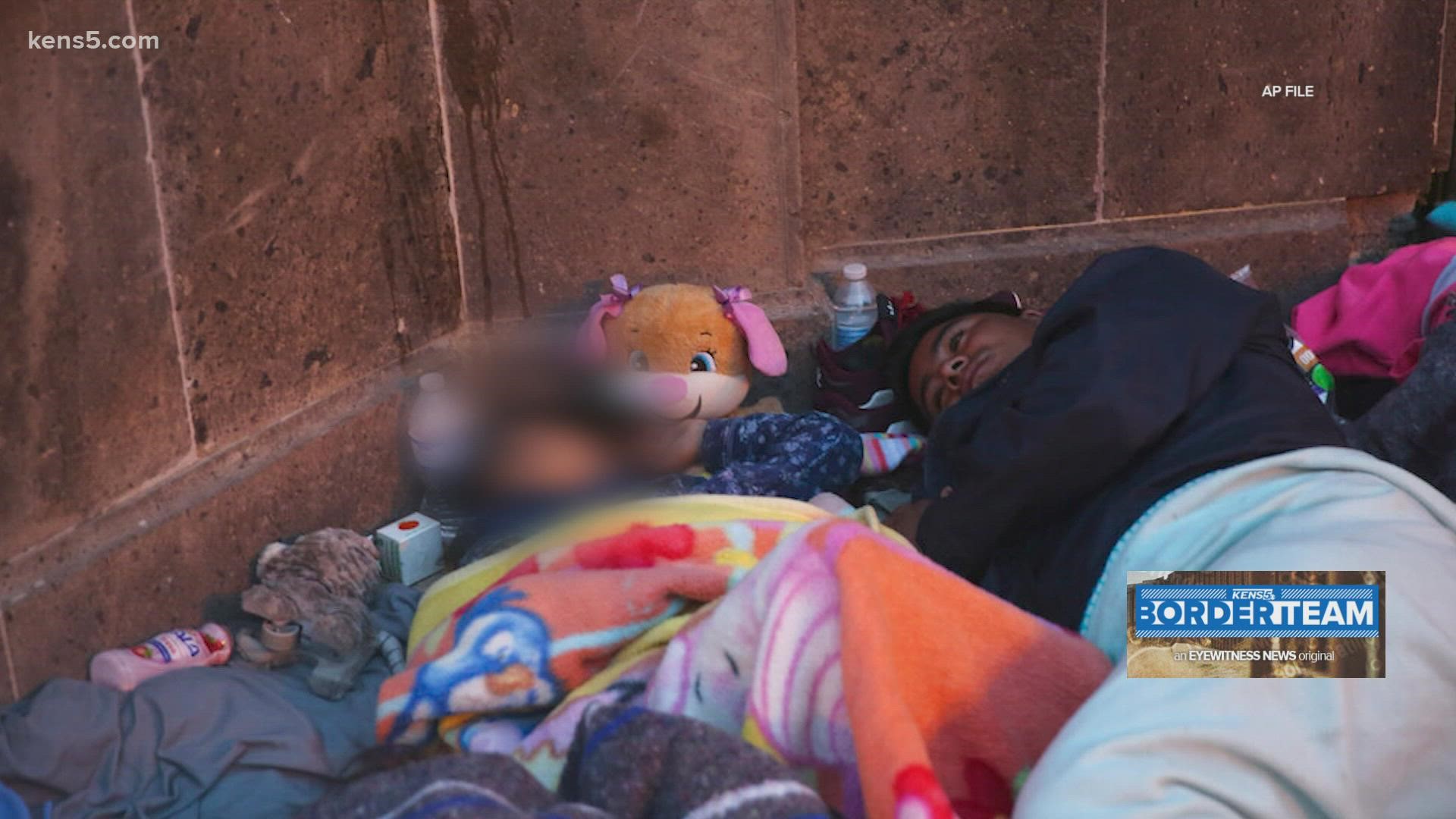HIDALGO, Texas — Just over the international bridge from Hidalgo, Texas, is Reynosa, Mexico, and a smaller community within it—an encampment built by people waiting to get into the U.S. It’s a place Felicia Rangel-Samponaro told KENS 5 in April she hoped she’d never see again.
“Looks like Reynosa is headed to become another encampment,” Rangel-Samponaro said at the time.
Rangel-Samponaro, co-director of The Sidewalk School for Asylum Seekers, crosses the border all the time to work in the Reynosa.
“It’s the Matamoros encampment all over again,” Rangel-Samponaro told KENS 5. Same thing, but a lot more dangerous.”
The large encampment in Matamoros, Mexico, across the international bridge from Brownsville, had thousands of asylum-seekers camping there, after being expelled from the U.S. by the Trump administration under the program called the Migrant Protection Protocol. MPP, as it’s known by, forced asylum-seekers to wait in Mexico for their court date in the U.S.
The encampment was emptied after the Biden administration ended MPP early on in the presidency.
The Biden administration continues to expel migrants under Title 42, a CDC rule the previous administration started using to expel asylum-seekers, citing the pandemic and the public health emergency.
Rangel-Samponaro said she watched the Reynosa encampment grow as the U.S. expelled more migrants under Title 42.
“Now [we] have over 2,000 people living on this small space,” she said. “Kidnappings of asylum-seekers in Reynosa, that's a daily occurrence, every day, common. And it's not just kidnapping one or two people. They kidnap the entire family, husband, wife, children. Take your parents if your parents are with you. And it's not something that's hidden.”
“The Americans are like, ‘Why don't they just go home?’ Have you ever met someone who would live out in the woods for two years with their children just for the hell of it? That makes no sense. None,” Rangel-Samponaro added. “Obviously that mom and her kids are living out there because they have no other place to go. They have no options.”
Rangel-Samponaro said before she could start the actual school lessons for the migrant children, she had to meet people’s basic needs first.
“We had to feed people,” she said. “We had to find shelter safety, take people to hospitals.”
Now, Rangel-Samponaro said The Sidewalk School runs four schools in Reynosa, teaching about 500 students.
“At the very least [what] we can give them are the basic necessities, so they can navigate through their life,” she said.
Rangel-Samponaro said the school’s students in Reynosa need virtually everything, including:
- Juice
- Cookies
- Cereal
- Backpacks
- Crayons, pencils and pens
- Notebooks
- Books in Spanish for elementary-aged children
She told KENS 5 the majority of migrants at the Reynosa camp have been expelled by the U.S. using Title 42.
“I don't think Title 42 is working as a public health measure or as a deterrent,” said Lindsay Gray, an immigration attorney and the CEO of VECINA, a nonprofit that trains other pro bono attorneys and volunteers to represent asylum-seekers, refugees and unaccompanied children.
“Thousands of people are staying at the southern border in hopes of being able to seek asylum,” Gray said. “There are two studies that have been done on whether immigration enforcement or the threat of enforcement is an effective deterrent. And the answer in both studies is no.”
“When families and people are desperate, they will try to enter the United States in search of safety however they can,” Gray said. “And so, another thing that we’re seeing is the rise of recidivism, where people try to enter the United States without permission over and over again.”
According to the U.S. Customs and Border Protection Operational Update for October 2021, “the large number of expulsions during the pandemic has contributed to a higher-than-usual number of migrants making multiple border crossing attempts, which means that total encounters somewhat overstate the number of unique individuals arriving at the border.”
More than 164,000 people crossed the Southwest border in October, a 14% decrease compared to September, CBP said.
CBP officials also said 29% of the 164,000 had at least one previous encounter with agents in the last year, compared to an “average one-year re-encounter rate of 14% for FY2014-2019,” according to the agency’s update.
Last month, U.S. Secretary of Homeland Security Alejandro Mayorkas called Title 42 a public health imperative, but not an immigration policy the administration would embrace.
This month, CBS News reported a former senior CDC official told a congressional committee that Title 42 “was not needed to contain the spread of the coronavirus.”
Meanwhile, the Biden administration is gearing up to restart MPP, after a court ordered it to do so.
The administration, including Secretary Mayorkas, has repeatedly discouraged migrants from making what they call a “dangerous” journey to the U.S.
The warnings, Rangel-Samponaro said, don’t seem to be working.
“It doesn't stop anybody,” she said.
Gray said the country needs effective immigration reform.
“At least restoration to the way things historically have been done,” she said. “I do think that the credible fear process, at least has some element of fairness,” Gray said, referring to the process of asylum-seekers explaining to U.S. immigration officials why they’re seeking protection. “Whereas simply just turning people away under Title 42 and saying that someone can't seek asylum under any circumstances or allowing people to seek asylum, but to wait in Mexico in unsafe living conditions with almost zero access to counsel, is certainly not fair and just not sustainable.”
Governor Greg Abbott has been saying the Biden administration is not doing enough to deal with what he calls the border “crisis.” Abbott and other high-profile Republicans have accused the administration of having an “open border” policy.
In March, Abbott started his own border initiative, Operation Lone Star, to fill in what he’s called gaps in the administration’s border enforcement. Operation Lone Star has deployed the Texas National Guard and the Texas Department of Public Safety to work in several border counties.

